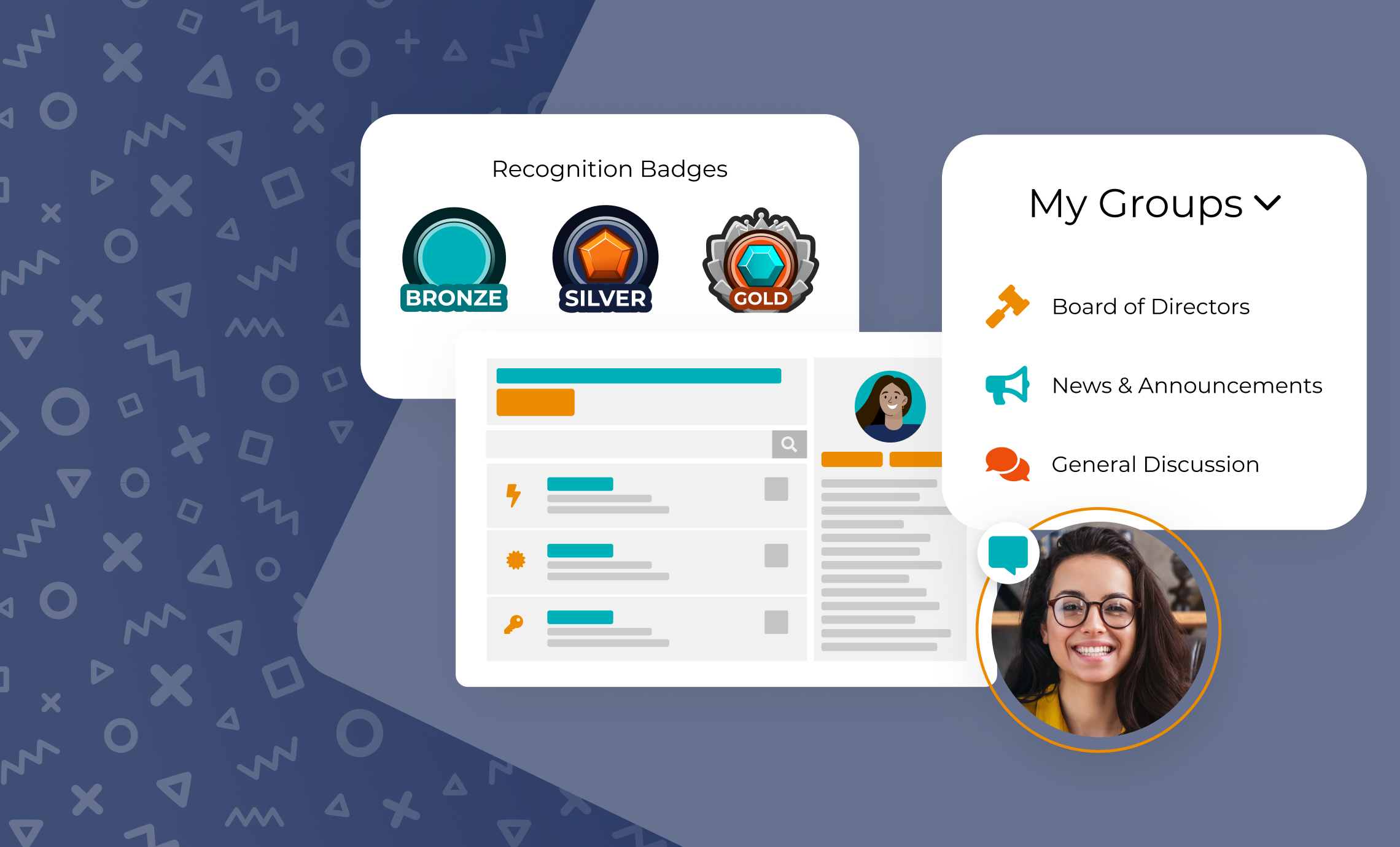Looking for a powerful way to provide member value? It’s time to offer an online member community.
The latest Community Brands research shows that 51% of members rely on their professional organization the most for networking, collaboration, sharing ideas, and participating in a professional community. And an online community provides an ideal way to deliver these member benefits.
Building a successful online community starts with a solid plan. Read on for what to include in your association’s online community strategy.
How to create an online member community strategy
When you use an online community at your association, you’ll have the power to maximize member engagement. Community Brands research found nearly half of members have used their organization’s online community. Those members who have used the online community report higher loyalty metrics. They also report a strong sense of community (52%) versus those who don’t (20%).
So how can you begin using your online community platform to begin enhancing member engagement? A well-considered strategy will be at the root of any thriving online community. Your plan doesn’t have to be complex, but it should include some basic elements.
Here are seven essentials for your association’s online community plan:
1. Goals and success metrics
Be sure to define your organization’s goals for the online community so that your entire organization knows what you’re trying to accomplish. For example, at the highest level, your goals might be to:
- Grow your existing online community
- Recruit more members
- Improve member engagement
- Increase member value
These are examples of high-level goals. To ensure your goals clearly define what you’re trying to accomplish, consider using the SMART approach to goal setting: Make sure each goal is Specific, Measurable, Achievable, Relevant, and Time-bound. For example, “To support our objective of growing our existing online community in 2024, we will recruit 500 more active online community members by adding a section about the online community to our new member onboarding emails.”
In addition to goals, establish a set of online community metrics to help you track progress toward your goals and find opportunities for improvement. For example, in the first goal above, growing the online community, you might track:
- Number of active online community members
- Number of online community logins
These metrics tell you how many of your members have joined the online community and how many are using it.
2. Online community team
Decide who to include on your online community team and define their roles and responsibilities. The team should include a mix of staff from across your organization. They should be able to:
- Suggest discussion group topics and content
- Moderate and participate in online discussions
- Regularly review metrics to find opportunities for improvement
3. Content strategy
Your online community should include valuable information, such as details about professional development opportunities, the latest reports on industry best practices, and new insights from industry thought leaders. Plan to give your members access to this type of content right off the bat to make them feel part of a group and benefit them professionally.
4. Content calendar
Create a calendar that includes a steady stream of new and useful content to entice users to visit the community more often. Content might include posts about industry news, commentary, job search tips, and career development opportunities. To keep people engaged, include content with varying purposes – such as providing industry information, starting a conversation, and entertaining.
5. Groups
Determine which groups you’ll launch with your community. You can start with a small number of groups and add more as you learn more about your members’ needs. A few groups to consider including in your initial launch:
- Non-members
- New members
- Discussion groups based on specific subjects, such as upcoming industry regulation changes
- Groups for each of your association’s upcoming events (so that attendees can connect and share content before, during, and after the event)
- Active committees and/or special interest groups
Look for an online community platform that supports both your staff and members by automatically sorting members into groups based on a variety of characteristics including volunteer status, committee membership, event registration, and more. Automatic sorting will streamline staff workflow, ensure members can start networking sooner, and drive deeper connections.
6. Community guidelines
Establish guidelines to set a standard for how members should interact in the community and to define under what conditions certain interactions might be moderated. While each association’s community guidelines will be unique based on their brand and legal requirements, here are some ideas:
- Keep them brief. Members should feel encouraged to share information and ideas. So, guidelines shouldn’t feel oppressive, nor should they feel so long that members don’t want to take the time to read them.
- Tie them with your mission. For example: “Welcome to the online community for [your association’s name]! This is the place where [audience] can [purpose/goals of the community]. In keeping with our organization’s mission of [mission], we offer the following guidelines for how to use the community to engage with each other.”
- Offer examples. Provide a short list of examples of inappropriate and unacceptable behavior, including:
- Unacceptable usage, such as self-promotion or business advertisements
- Unacceptable content, such as obscene messages and materials
- Inappropriate behavior, such as defamation, bullying, and hate speech
- Explain how you’ll enforce guidelines. Let community members know your process for enforcing community guidelines. For example: How do members report complaints and provide feedback? What is the review process for possible violations? What is the penalty?
- Make guidelines easy to find. Place guidelines somewhere that’s easy for members to find. Try to keep the link in the same place so that members know where to find it when they need it.
Choose an online community platform with advanced security options to protect your members and association. With an enhanced user security agreement, you can build an inclusive member community, boosting member engagement and loyalty across your organization.
7. Rollout plan
Create a plan to launch the online community with your members. The plan might include:
- Teaser communications to let members know the community is coming.
- Instructions and a timeline for early adopter members to post on the day of the rollout and for the next several weeks after the launch.
- A prep meeting to confirm that everything in the community and everyone on the team are ready to launch.
- A communications plan to let members know that the online community is live and how to log in.
Discover the right online community platform for your association
Nimble Communities from Nimble AMS by Community Brands is an online community platform that makes it easy for your team to set up and manage a full-featured online community for your association. Nimble Communities unifies the world’s best community platform, Salesforce Experience Cloud, with leading member benefits to deliver the most powerful online community.
Like in the tips mentioned above, Nimble Communities priorities your member’s security, offers personalized content, and makes gaining member insights a breeze. When you connect association members to Nimble Communities, you’ll drive engagement and loyalty throughout the entire member journey.




